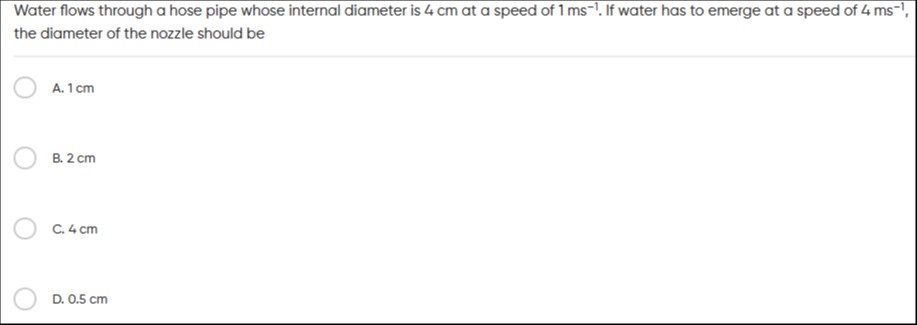Question
Question: Water flows through a hose pipe whose internal diameter is 4 cm at a speed of 1 ms⁻¹. If water has t...
Water flows through a hose pipe whose internal diameter is 4 cm at a speed of 1 ms⁻¹. If water has to emerge at a speed of 4 ms⁻¹, the diameter of the nozzle should be

A
1 cm
B
2 cm
C
4 cm
D
0.5 cm
Answer
2 cm
Explanation
Solution
The continuity equation for an incompressible fluid states that the volume flow rate is constant: A1v1=A2v2. The cross-sectional area of a pipe is related to its diameter by A=4πd2. Substituting this into the continuity equation gives 4πd12v1=4πd22v2, which simplifies to d12v1=d22v2. Given: d1=4 cm, v1=1 m/s, and v2=4 m/s. We need to find d2. (4 cm)2×(1 m/s)=d22×(4 m/s) 16 cm2×1 m/s=d22×4 m/s d22=4 m/s16 cm2×1 m/s d22=4 cm2 Taking the square root, d2=2 cm.
